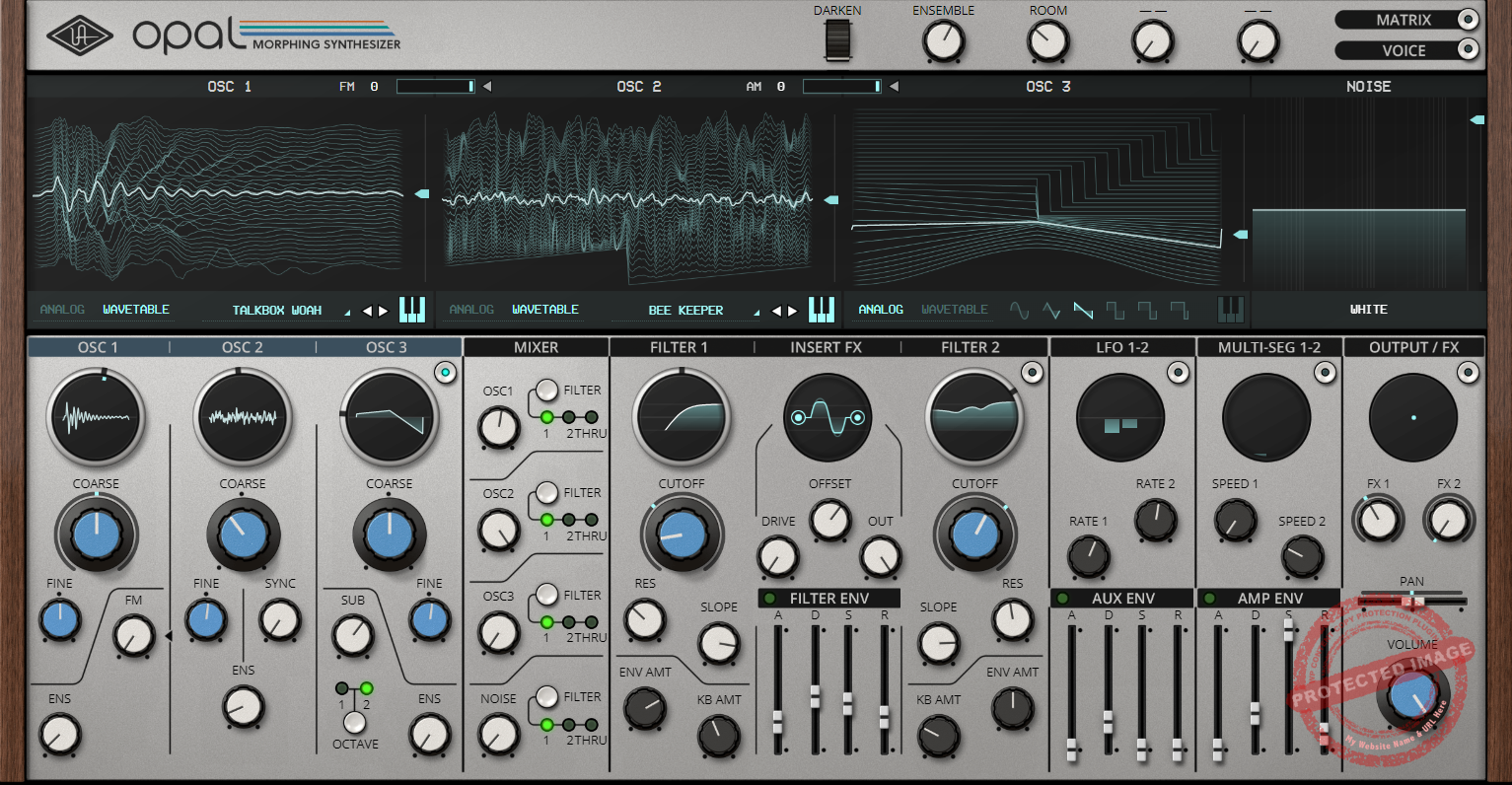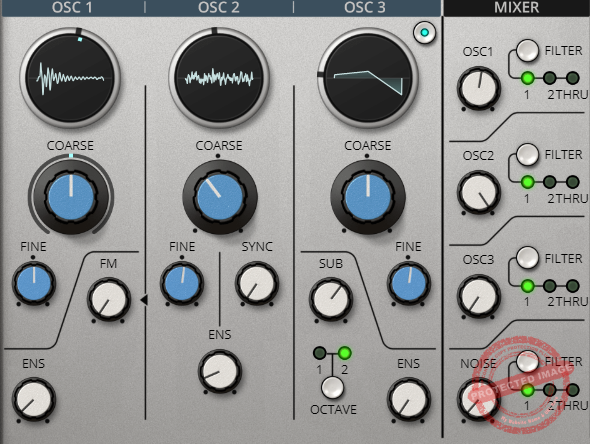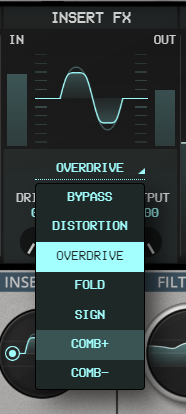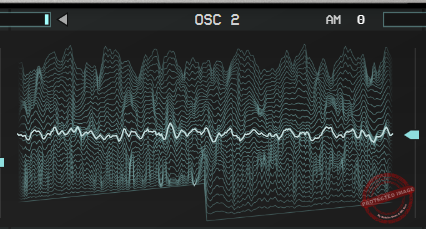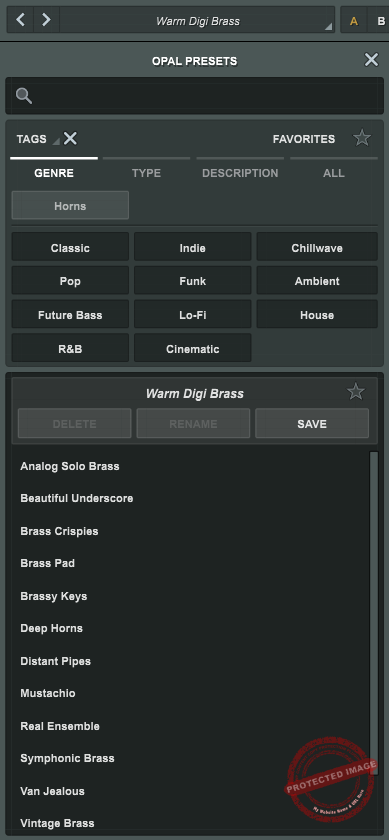Opal Morphing Synth offers a rich and versatile palette of sounds, excelling with its morphing oscillators, deep modulation tools, and polished effects. While CPU demands and the subscription model may not suit all users, its versatility, excellent presets, and high-quality sound make it a powerhouse.
Pros
- Crystal-clear sound blending analog warmth and digital precision seamlessly
- Morphing oscillators and 91 wavetables offer immense sound design flexibility
- Includes UAD-modeled effects like reverbs, delays, and compressors for professional polish
- Deep modulation options with Multi-Seg envelopes and a flexible modulation matrix
- Well-curated presets suitable for cinematic, electronic, and experimental genres
Cons
- High CPU usage with no eco mode for performance optimization
- Lacks user wavetable import, limiting customization compared to competitors
- Subscription-only model may deter users preferring one-time purchases
- Modulation workflow requires extra clicks, lacking drag-and-drop functionality
- Effects like reverb and delay lack low-frequency control, leading to potential muddiness
I will review the versatile Analog x Wavetable-based synthesizer Opal by Universal Audio, which is also a part of their Spark subscription.
When I first peaked at Opal, the first thing I noticed was the oscillator section, which includes both analog oscillators and wavetables as the sound sources. On further inquiry, I noticed there are three of these oscillators that you can combine with an external Noise Oscillator, along with the usual modulators, filters, and effects.
So, what’s cool about this plugin is that UAD knows how to program that “analog” texture in plugins. When I saw that they combined that characteristic with wavetable synthesis, I was excited and was expecting a synth that sounded like a deadly combination of Diva and Serum.
So, whether or not Opal stood up to my expectations is what this review is about. I will be covering all aspects of this plugin, from its sonics, interface, user-friendliness, functionalities, and more.
Features
- The Oscillator Section
With three oscillators and a noise generator, you can create everything from fat basslines to shimmering pads using its analog warmth and digital precision. What’s more, these oscillators come with morphing capabilities, letting you glide between waveforms like a DJ scratching vinyl at a house party.
I spent hours designing different styles of sounds, one of which was detuning saw waves to create that lush, phase vibe that fills out a mix like butter on toast. Then there’s the pulse-width modulation (PWM), which UAD absolutely nailed. Combine that with the wavetables, and you’ve got a synth that can sound both vintage and futuristic in the same session.
- Filters That Do More Than Cut Frequencies
Opal doesn’t just stop at one filter. It gives you two. Think of it as a filter duet: a high-pass and a low-pass working together in harmonic synergy. Each filter comes with its own envelope and routing options, meaning you can independently sculpt the tonal edges of your sound. Moreover, both the filters can be switched and morphed between high and low passes, and one curve in between is a bandpass.
- A Modulation Matrix Worth Getting Lost In
If you’re a fan of tinkering, Opal’s modulation matrix will feel like a playground. It’s where you can take control of your sound design destiny by routing LFOs, envelopes, and more to nearly any parameter in the synth. I love this section as it is as hands-on, flexible, and advanced as it could get. I was able to customize the modulations of any parameter(s) and set appropriate target, source, and morphing or modulation settings.
For me, the fun started with assigning LFOs to oscillator shapes, creating rhythmic pulses that danced perfectly with my DAW’s tempo. It’s intuitive but not so simple that it feels limiting. Whether you’re a modulation minimalist or someone who layers mod sources like lasagna, the matrix will keep you busy (and inspired) for hours.
- Onboard Effects
Why stop creating killer sounds when you can polish them up with studio-grade effects? Opal includes a suite of onboard effects ranging from distortion to spring reverb to flangers. While I found the distortion a bit too aggressive for delicate patches, it’s a beast for grittier basslines.
The flanger has a lot of lush potential. I paired it with an LFO-modulated filter, and the results were… well, let’s just say my headphones got a workout. The reverb options are also decent, with the Alien Verb stealing the show for its ethereal quality. It’s not every day a synth makes you feel like you’re composing a sci-fi movie score.
- The Interface: Slick but Quirky
Let’s talk about the design. Opal’s interface is modern, clean, and easy on the eyes—until you’re trying to figure out what does what. For instance, the filter controls are a bit unconventional, and finding certain parameters took more digging than I’d prefer. That said, once you’re familiar with the layout, it’s smooth sailing.
UAD clearly aimed for a balance between simplicity and depth, and for the most part, they nailed it. I just wish there were tooltips or a quick-start guide for those first few minutes of head-scratching. If you have used additive synthesizers before, you can follow it easily, as it has the typical Oscillators > Filters > Modulators > Effects workflow.
Interface & Workflow
The interface is divided into clear sections: oscillators, filters, modulation, and effects, each housed in expandable panels. You can click on any section to open a detailed view, which feels intuitive and keeps the main screen uncluttered.
Sound Sources
So what I love is how intuitively the waveform displays of each oscillator are placed on the GUI, so you can select any one oscillator’s “Analog/Wavetable” button, and it will open the menu of wavetables and other fundamental sounds that you can select, from categories like Digital, Synth, Complex, Vowel/Vocal, and Instrument.
For wavetables, you can scroll through different waveforms only through the wavetable display.
Further, you can also add AM and FM effects to all three oscillators and tweak parameters like pitch (coarse and fine), octave, sub-bass frequencies in the third oscillator (which is best to use for the low frequencies layers), etc.
When it comes to modulations, there aren’t any drag-and-drop features, and the entire experience feels quite hands-on and a little tedious sometimes, to be honest, especially given I am used to Serum, where I can simply throw the modulation at whichever parameter I like.
Modulations
That said, Opal’s modulation matrix is well-organized and visually clear. Each source (LFO, envelope, velocity, etc.) can be assigned to multiple destinations with precise control over modulation depth. Sure, it’s a few extra clicks compared to drag-and-drop, but the payoff is a greater degree of clarity and accuracy when fine-tuning your patches.
One feature I appreciated was the ability to sync LFOs to DAW tempo and customize their waveforms. You’re not limited to the basics here; Opal offers detailed controls like rate adjustment and offsets, and it even has the ability to assign multiple LFOs to a single parameter. This opens up a world of rhythmic possibilities for sound design, from pulsating pads to evolving textures.
You get 2 LFOs, for each of which you can adjust the parameters, shape them as per your preference, and visualize them using their curves.
Additionally, the most exciting part is the multi-segment envelope, which means you can craft highly detailed modulation shapes. Unlike traditional ADSR envelopes, Opal’s MSEG lets you add multiple points and curves, giving you precise control over the attack, decay, sustain, and release stages. In fact, you get two of these.
It’s perfect for creating evolving sounds, rhythmic sequences, or intricate filter sweeps that shift dynamically over time. I found this feature especially useful for designing ambient textures and cinematic effects. By assigning the MSEG to parameters like filter cutoff and wavetable position, I could create patches that felt alive, with constant movement and evolving tonal qualities.
It’s a level of detail that rewards patience and experimentation, especially for sound designers who enjoy crafting complex patches. Opal also offers velocity and aftertouch modulation, adding another layer of expressiveness. As a keyboard enthusiast or MIDI freak, you can route these performance-based controls to parameters like pitch, filter, or effects, giving your sounds a human touch.
Filters
You’ve got Filter 1 and Filter 2, each with selectable modes (low-pass, high-pass, band-pass, and slope variations), giving you a lot of options for carving out frequencies. The inclusion of individual cutoff and resonance controls for each filter allows for precise shaping.
One standout feature is the insert effects section placed between the filters. This acts almost like a third filter stage, adding drive and tonal color. The visual feedback on the cutoff curves is a nice touch, making it easier to understand the effect of your adjustments at a glance.
The filters are routed in series or parallel, as indicated by the Mixer section on the left, where you can adjust each oscillator’s path through Filter 1, Filter 2, or both.
First Impressions and Sound
The UADx Opal Morphing Synth had me hooked the moment I loaded it up. Do you know that feeling when you stumble across something that’s equal to a shiny toy and a serious tool? That’s exactly what Opal delivers. Within seconds, I was swept into a kaleidoscope of lush pads, punchy basses, and quirky, shape-shifting textures that practically begged to be played with.
It’s rich, versatile, and unapologetically modern, with just the right nods to analog warmth. The three oscillators (plus a white noise generator for your chaos-loving heart) morph seamlessly between wavetables and analog-style oscillation.
The morphing oscillators are the heart of the synth, allowing for seamless transitions between waveforms, including analog-inspired shapes and a curated selection of 91 wavetables.
I spent way too long flipping through the presets and marveling at how even the factory sounds felt alive and responsive. Velvety pads? Check. Basses with enough thump to rattle your neighbors’ drywall? Double check. Glittery, alien leads? Oh, they’re here too, and they’ve brought friends. I think UAD has done a great job modeling its high-quality analog technology into a synth plugin with this one.
The morphing oscillators are where things get spicy. You’re not just choosing waveforms here; you’re sculpting them like some kind of audio Michelangelo. Want a smooth fade between sine and saw? Easy. Prefer a jumpy, glitchy switch? Done. I also found the morphing filters pretty cool.
Unlike your typical static filter shapes, these are endlessly variable, letting you sweep fluidly between low-pass, band-pass, high-pass, and even notch configurations.
Playing Around
I couldn’t resist diving in and tweaking the presets. One pad sound (“Big Pad,” as humbly named by the preset gods) practically melted into my hands with its lush, dynamic timbre. I couldn’t stop pressing harder just to see what would happen. And boy, the velocity sensitivity on this thing is no joke and is expressive enough to make even your clunkiest MIDI keyboard feel like a grand piano.
Then there’s the “Ensemble” feature. Imagine cloning each oscillator and sending them to a choir rehearsal. That’s the vibe. You can dial in subtle warmth or go full-on supersaw madness. It’s up to you. Couple that with the oscillator cross-modulation (FM and amplitude modulation between oscillators), and you’re swimming in a sea of sonic possibilities.
Compatibility
| Operating Systems |
macOS: Catalina 10.15, Big Sur 11, Monterey 12, Ventura 13, Sonoma 14, Sequoia 15
|
|
Windows: Windows 10 or Windows 11 (64-bit editions)
|
|
| Plugin Formats | VST3, AU, AAX |
| Price | $39 (discounted at the time of publishing this article), MRP: $199 |
Conclusion
I would say Opal is a pretty solid and versatile synth, and the sound quality is really remarkable and impressive, but it won’t replace my go-to synths for these purposes, which are Serum and Diva, and that’s only because I have built a workflow around them and I am pretty used to their workflow.
The morphing oscillators are the crown jewel, offering endless sonic possibilities with their smooth transitions between analog waveforms and carefully curated wavetables. Add the dual morphing filters, multi-segment envelopes, and a robust modulation matrix, and you’ve got a synth that feels as much like a playground as it does a tool for serious music production.
The lack of user wavetable import is a surprising limitation for a synth in this category, and the high CPU usage might make your computer sweat during dense sessions, but still, when I sat down to create, these gripes melted away as the sound quality took center stage. The presets are production-ready, the effects are top-notch, and every tweakable parameter feels thoughtfully designed.
Sure, I missed having drag-and-drop modulation, but the clarity and precision of Opal’s matrix made up for the extra clicks. If you’re already in the Universal Audio ecosystem or open to exploring the Spark subscription, Opal could be worth every second of your time.

Shaurya discovered his passion at the intersection of writing and music. Starting his career as a songwriter and rapper, he gradually picked up FL Studio and soon delved deep into the world of audio engineering and music production. Based in Delhi, India, he has worked with top studios, been featured on Red FM, garnered millions of streams on Spotify, and released music with major labels like Sony and Hitz.

